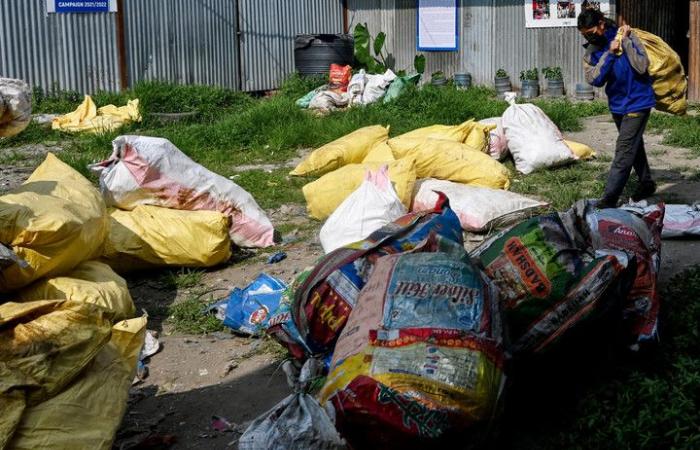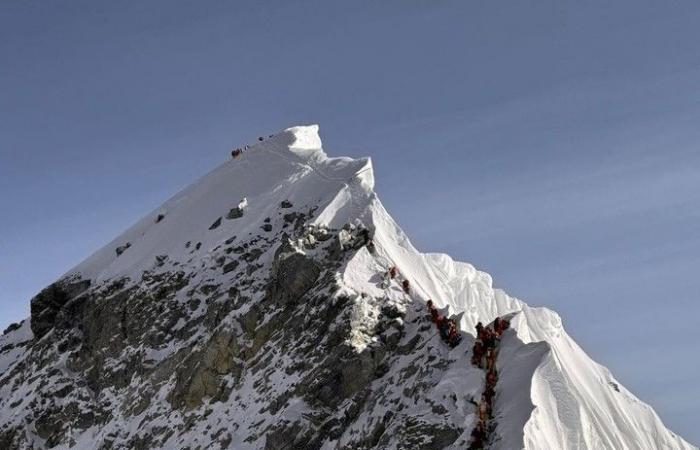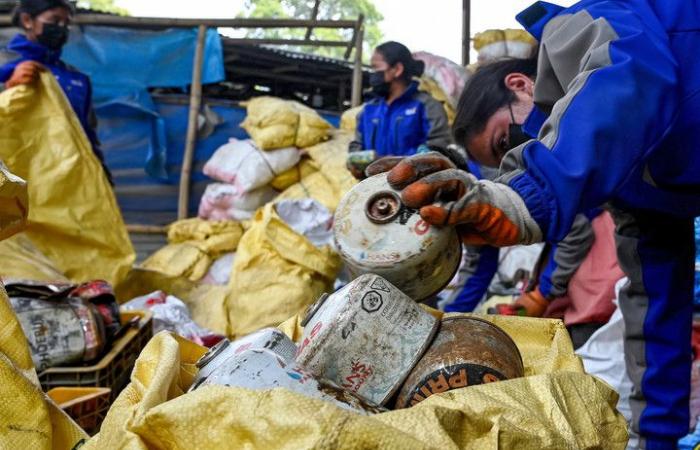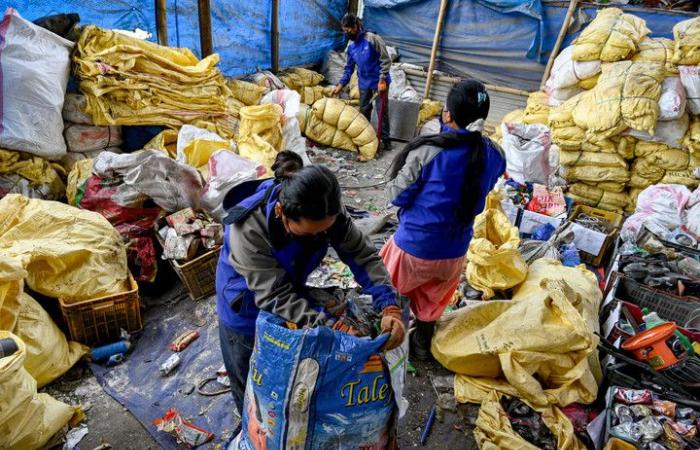The disappearance of snow and ice on the slopes of Everest, a consequence of climate changeis bringing to light the corpses of hundreds of climbers who died trying to reach the roof of the world.
Among those who are climbing the highest peak of the Himalayas this year there is a unique team, whose objective is not to reach the 8,849 meter summit but lower forgotten human remains.
Risking their lives, Five frozen bodies have already been recoveredincluding a skeleton, which they then took to Kathmandu, the capital of Nepal.
Two of the bodies have already been pre-identified pending “detailed tests” to confirm their identity, said Rakesh Gurung of Nepal’s Tourism Ministry. Some will be cremated.
A dangerous and macabre mission
The mission to clean Everest and the neighboring peaks of Lhotse and Nuptse is difficult dangerous and macabre.
“Due to the effects of climate change, bodies and waste is increasingly visible “As the snow cover diminishes,” Aditya Karki, a Nepalese army major leading a team of 12 soldiers and 18 climbers, told AFP.
More of 300 people have died on Everest since expeditions began in the 1920s, eight of them in the last season.
Many bodies were left in the place, some hidden by snow or in deep crevices. Others are still visible in their climbing gear and have become reference points for the mountaineers who have given them nicknames such as “Green Boots” or “Sleeping Beauty”.
“There is a psychological effect,” says Major Aditya Karki. “People believe that you are entering divine territory when you climb mountains but if you see dead bodies on the way it can have a negative effect,” he says.
The “death zone”
Many bodies are found in the so-called “death zone”, where low oxygen level increases the health risk and can be fatal if left there for too long.
To remove one of the bodies that was trapped in the ice, it was necessary to work with hot water and an axe. for 11 hours.
 Many bodies are found in the so-called “death zone”, where low oxygen levels increase the risk to health. Photo: archive
Many bodies are found in the so-called “death zone”, where low oxygen levels increase the risk to health. Photo: archive“It is extremely difficult,” says Tshiring Jangbu Sherpa, who led the expedition to recover that body.
“Taking out the body is one thing, lowering it is another“, he says.
High-altitude body recovery remains a controversial issue in the climbing community. It costs thousands of dollars and requires up to eight rescuers for each body.
It is difficult to transport heavy loads at high altitude and a corpse can weigh more than 100 kilosBut Aditya Karki believes the effort is necessary.
“We need to bring them back as much as possible,” he says. “If we continue to leave them behind, our mountains will become cemeteries“, he adds.
During missions, bodies are often wrapped in a bag and then They go down on a sleigh.
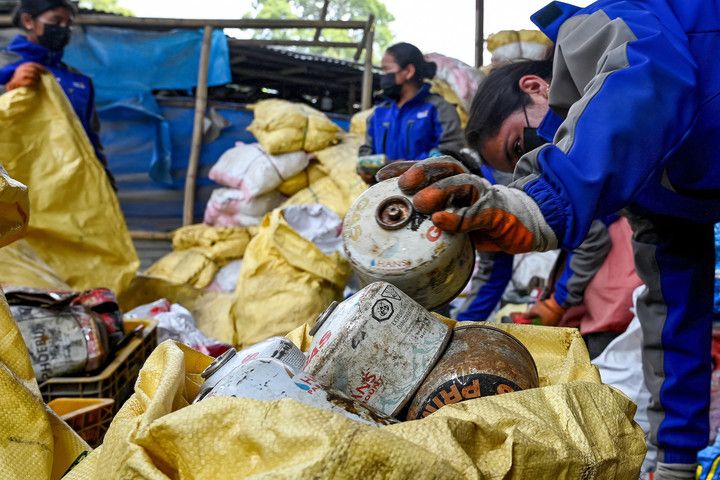 All kinds of debris have been found on the path leading to the summit. Photo: AFP
All kinds of debris have been found on the path leading to the summit. Photo: AFPA body found near the summit of Lhotse, the world’s fourth highest peak at 8,516 metres, was one of the most difficult to bring down, says Tshiring Jangbu Sherpa.
“The body He was frozen, his hands and legs separated (…) We had to carry it to Camp 3 and only there could it be transported by sled,” he recalls.
The Himalayas still hold many secrets.
The body of George Mallory, a British mountaineer disappeared in 1924was found in 1999 but that of his partner Andrew Irvine has never been located.
Nor was his camera found, which could provide evidence that this ascent was successful and would force the history of mountaineering to be rewritten.
 Workers separate waste materials recovered from Mount Everest for recycling in Kathmandu. Photo: Prakash MATHEMA / AFP
Workers separate waste materials recovered from Mount Everest for recycling in Kathmandu. Photo: Prakash MATHEMA / AFPIn total, the mountain cleanup campaign has a budget of more than $600,000 and has mobilized 171 Nepalese guides and porters who recovered 11 tons of waste.
On the path leading to the summit he has found fluorescent tents, climbing equipment, empty gas cylinders and even human excrement.
“The mountains have given us many opportunities,” says Tshiring Jangbu Sherpa. “We have to give them back, we have to remove the rubbish and the bodies,” he insists.


